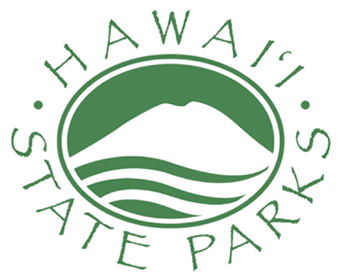Apply for a Permit to use Hawaiʻi State Parks
Enjoy Hawaiʻi’s State Parks Responsibly
Hawaiʻi’s state parks provide a wide range of environments and activities to enjoy. Whether you’re a resident or visitor, a small group of friends picnicking at a pavilion or a large group gathering in the great outdoors, ensuring you have the right permit and a strong understanding of the rules can help you enjoy Hawaiʻi’s state parks today and ensure it will be there for tomorrow’s generation to enjoy.
Choose the type of State Park Permit you need:
Permits for General and Group Use
General Use Permit
Groups of adults and minors up to 25 people
Required For:
Day picnickers or other day users in groups of less than 25 people who want to use the State Park
Must apply at least
What is the minimum time in advance, and no more than 1 year in advance
Exceptions
Regardless of group size, permits are required for use of the pavilions at the following park areas:
- Wailoa River State Recreation Area, Hawaiʻi
- Kōkeʻe State Park, Kauaʻi
- Polihale State Park, Kauaʻi
Please note
Minors below the age of 18 who stay beyond 7:00 pm must have adut supervision of 1 responsible adult for every 10 or fewer minors
Group Use Permit
Groups of adults and minors up of 26 or more people
Required For:
Day picnickers or other day users in groups of 26 or more people who want to use the State Park
Must apply at least
What is the minimum time in advance, and no more than 1 year in advance
Exceptions
Regardless of group size, permits are required for use of the pavilions at the following park areas:
- Wailoa River State Recreation Area, Hawaiʻi
- Kōkeʻe State Park, Kauaʻi
- Polihale State Park, Kauaʻi
Please note
Minors below the age of 18 who stay beyond 7:00 pm must have adut supervision of 1 responsible adult for every 10 or fewer minors
Permits for State Parks Special Use
Oʻahu Special Use Permit
Individuals or organizations using Hawaiʻi State Parks for special activities
Required For:
Any person or organization who is hosting certain activities at a state park, including but not limited to: group use, use of pavilions, meetings, weddings, shows, community events, scientific research, and gathering of forest products
Must apply at least
Non-Commercial Use
45 days before requested date of use, and no more than 1 year in advance
Commercial Use
90 days before requested date of use, and no more than 1 year in advance
Please note
Commercial activities refer to any activity where a fee is collected for any reason including participation and fundraising.
Neighbor Island Special Use Permit
Applications must be obtained and submitted in person or by mail at any district office.
Individuals or organizations using Hawaiʻi State Parks for special activities
Required For:
Any person or organization who is hosting certain activities at a state park, including but not limited to: group use, use of pavilions, meetings, weddings, shows, community events, scientific research, and gathering of forest products
Must apply at least
Non-Commercial Use
45 days before requested date of use, and no more than 1 year in advance
Commercial Use
90 days before requested date of use, and no more than 1 year in advance
Please note
Commercial activities refer to any activity where a fee is collected for any reason including participation and fundraising.
Permits for Oʻahu Service Learning Trips
Field Trip or Service Project Permit
Schools or organizations on the island of Oʻahu interested in arranging a field trip or service project with the Hawaiʻi State Department of Land and Natural Resources (DLNR), Division of State Parks
Required For:
Any school or organization, regardless of group size, desiring to take the following actions at select Oʻahu state parks.
- Interpretive Hike
- Non-native Plant Control
- Out-planting Native Species
- Trail Maintenance
Must apply at least
30 business days before requested trip date
Activity will be reviewed within
2 weeks of form submission
Resources
Required Release of Liability Form
Follow up with Oʻahu Park Interpretive Specialist
Please note
Trip will be cancelled on imminent weather.
Some sites may not have running water or restroom facilities.
Some sites may be remote with little to no cellular service
Permits for Kealakekua Bay Transit Access
Applies to:
Visitors seeking to cross the waters of Kealakekua Bay.
NOTE: Vessels shall not be used to transport people to land at Kaʻawaloa Flat or to traverse any portion of Kaʻawaloa Flat, including the Captain Cook Monument unless authorized by separate DLNR written approval. See Map.
Required For:
All vessels transiting the waters of Kealakekua Bay, including but not limited to kayaks, boats, canoes, stand-up paddle boards, and inflatables.
Must apply at least
14 days before requested date of access
Activity will be reviewed within
14 days
Non-Commercial Permit Applications
Instructions
Non-Commercial Application
Commercial Permit Applications
Instructions
Commercial Application
Resources
Authorized Kayak Tour Companies
Kealakekua Marine Life Conservation District Overview
Regulated Areas Within Kealakekua Bay
Please note
These permits only apply to vessels transiting the water and DO NOT authorize any business operation related to soliciting for customers, renting equipment or otherwise promoting a business within the boundaries of Kealakekua Bay State Historical Park.
State Parks in Hawaiʻi
There are 54 state parks across five major islands: Hawaiʻi, Kauaʻi Maui, Molokaʻi, and Oʻahu.
Acres Encompassed by Hawaiʻi State Parks
State Parks encompass 30,000 acres for you to explore, from beautiful forests to stunning beach areas.
Size of Group Requiring an Activities Permit
Group use permits are required for groups of 26 or more persons, regardless of the activity and must be submitted at least 45 days before the requested date of use.
State Park Activities and Information
The State of Hawaiʻi Department of Land and Natural Resources Division of State Parks (DSP) proudly protects Hawaiʻi’s natural, scenic, and cultural resources for Hawaiʻi residents, visitors, and future generations. Learn more about the work they do.

